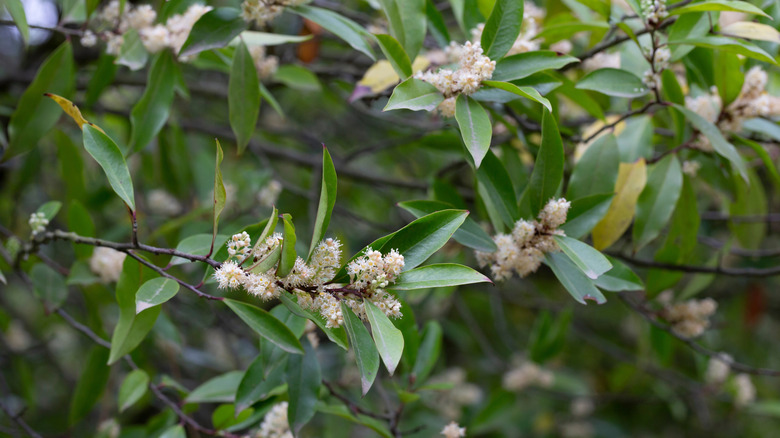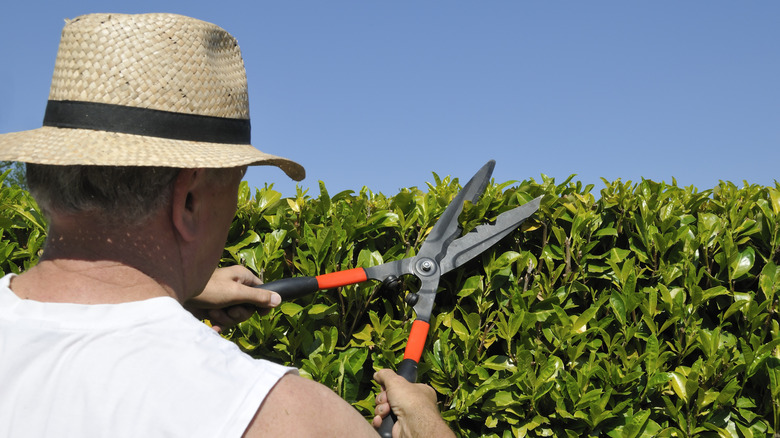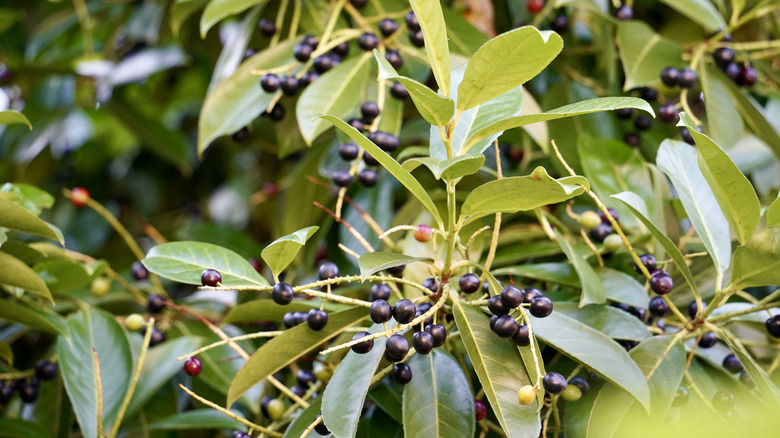What To Know Before Planting A Beautiful Carolina Cherry Tree
The Carolina cherry tree (Prunus caroliniana), also known as the Carolina cherry laurel, is an evergreen shrub or small tree that hails from the southern United States. With glossy green leaves and fragrant white flowers that bloom in spring, it's a popular choice for homeowners as it keeps landscapes beautiful all year long in zones 7-10. These trees' ability to tolerate a range of environmental conditions, such as partial shade to full sun, makes them a great choice for most sites. However, before you decide to plant a Carolina cherry, there are some important things you need to know about this tree.
First, while the tree's roots aren't considered invasive or aggressive, they do spread horizontally. This can be a concern if you're planting the tree near structures or driveways. The roots can be fairly shallow but still extensive, so it's important that they are situated at a reasonable distance from home foundations or hardscapes to avoid damaging the latter. As a good rule of thumb, keep the tree more than 4 feet away from buildings, since that's approximately how far its roots can extend.
While often planted as a hedge in the yard due to their dense growth habit, Carolina cherries can grow into a full-sized trees — sometimes reaching up to 40 feet in height. This height, and the equally impressive 25-foot canopy, add to the tree's visual appeal, but you must be sure that such a large tree will fit comfortably within your landscape. You can manage the tree's growth and help it maintain a neat, compact shape with regular pruning.
Potential hazards and maintenance requirements
Carolina cherry trees produce small berries that look appealing but come with potential risks. The berries contain cyanogenic glycosides, which are toxic if ingested. Most birds are not affected by these compounds, so they can eat the berries safely. But don't mistake these poisonous plants for their harmless look-alikes. For young children or pets, ingesting the seeds, stems, or leaves of the plant could lead to severe symptoms, such as coma and respiratory failure. If you have concerns about the safety of your family or pets, then it might be a good idea not to plant Carolina cherry near spots they frequent, such as pathways or play areas.
Also, caring for young Carolina cherries requires a bit of effort on your part. The saplings require consistent watering until their roots establish themselves. Be sure to weigh this commitment before you plant a young Carolina cherry in your yard. However, once mature, these trees can handle periods of dry weather quite well, even though they do appreciate watering in late spring or during long dry spells. This drought tolerance makes the Carolina cherry a great choice for homeowners in areas where water conservation is important or where drought conditions are common.
Pests, drought tolerance, and placement
Carolina cherries' foliage can attract pests, such as mites, borers and scale, but these are usually manageable with proper care. Spider mites cause stippling on leaves and can be managed by rinsing foliage with a strong stream of water. Scale insects respond well to horticultural oil applied during the tree's dormant season. To prevent borers, which target stressed trees, maintain the cherries' health with proper watering, pruning, and by avoiding damage to the trunk.
Fungal diseases, including root rot and leaf spot, may affect Prunus caroliniana in overly wet or poorly drained soils. Symptoms such as yellowing or browning leaves, wilting, and reduced growth can point to root rot. To minimize the risk, plant Carolina cherries in well-draining soil, avoid overhead watering, and prune them to encourage proper airflow.
Carolina cherry trees are excellent for attracting wildlife, and their fragrant spring flowers draw pollinators like bees and butterflies. Meanwhile, the large canopies help this type of cherry laurel tree attract beautiful robins to your backyard. Additionally, their thick, evergreen foliage makes them ideal for privacy screens, natural borders, or windbreaks.


